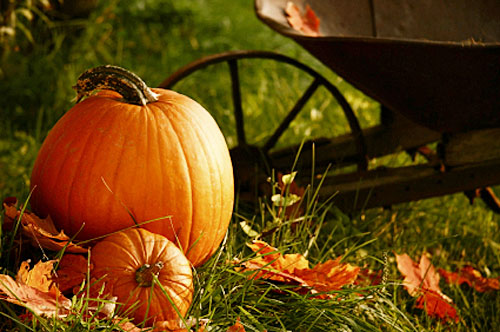
Written By: Beth Ehrensberger, RD
Title: Registered Dietitian
Alumni: University of Tennessee, Knoxville
Last Updated on:

What will it be this year: Spooky face or smiling face? When most people think of pumpkins, it’s carving that comes to mind. But instead of wondering how to carve your pumpkin this year, perhaps the question should be “roasted or sautéed?” The bright orange orb you love to carve deserves much more than a night of glowing glory, followed by a date with the dumpster. Pumpkins are brimming with great nutrition and promising health benefits.
Although it looks quite different from the familiar yellow vegetable you’ve often enjoyed alongside your favorite main dish, pumpkin is also a type of squash. The tough outer skin and sweet flavor of pumpkin are the distinctive trademarks of a squash harvested during cooler weather, often referred to as “winter squash.” Other winter varieties like acorn squash, butternut squash, banana squash, and buttercup squash can be prepared in the same way as pumpkin.

Pumpkins are packed with beta carotene, an antioxidant with properties that can help improve immune function and reduce the risk for chronic diseases such as cancer and heart disease. A cup of cooked pumpkin has only 50 calories and nearly three grams of fiber, making it the perfect healthful addition to your autumn meal. Even better, while the flesh of the pumpkin packs nutritious power on its own, there’s a good reason not to toss the seeds. Promising research suggests that the oil from pumpkin seeds can inhibit benign prostate growth.
While it seems that “pumpkin” and “pie” always end up in the same sentence, there are many other ways to enjoy pumpkin. Pumpkin’s naturally sweet flavor lends itself easily to pies, cakes and custards; however, pumpkins also make great savory dishes, too. Pumpkins can be cut into chunks, peeled, roasted and dressed with a bit of olive oil, salt, and pepper for a simple, tasty dish. Pumpkin seeds, also called pepitas, can be purchased ready to eat, or you can easily roast your own in the oven with a light toss of olive oil and your favorite combination of spices.
While all pumpkins are edible, the smaller “pie” or “sugar” pumpkins are the best (and most manageable) for cooking. Bypass the big pumpkins stacked outside of the market, and search for a 2-5 pound pumpkin in the produce section near the other winter squash. If you’re not up to cutting your own pumpkin, the canned version makes an excellent stand-in, and is also a good choice when it’s not pumpkin season. To add a powerful health punch, drop a generous scoop of canned pumpkin into plain pancake batter. Canned pumpkin swirled with chicken broth, a bit of fat free half and half, salt, and pepper makes a delicious soup.
Use your imagination to create a healthy pumpkin recipe that ventures beyond the ordinary. It’s easy to surprise your family by cooking pumpkin instead of simply carving it!
Alumni: University of Tennessee, Knoxville – Beth Sumrell Ehrensberger is a Registered Dietitian and holds a Master Degree in Public Health. An experienced nutrition counselor, writer and public speaker, Beth specializes in translating complex nutrition information into practical concepts. Beth was awarded a Nutrition Communications Fellowship to the National Cancer Institute, and has worked on the internationally recognized Nutrition Action Healthletter of the Center for Science in the Public Interest.
antioxidant, beta-carotene, pumpkin, pumpkin pie